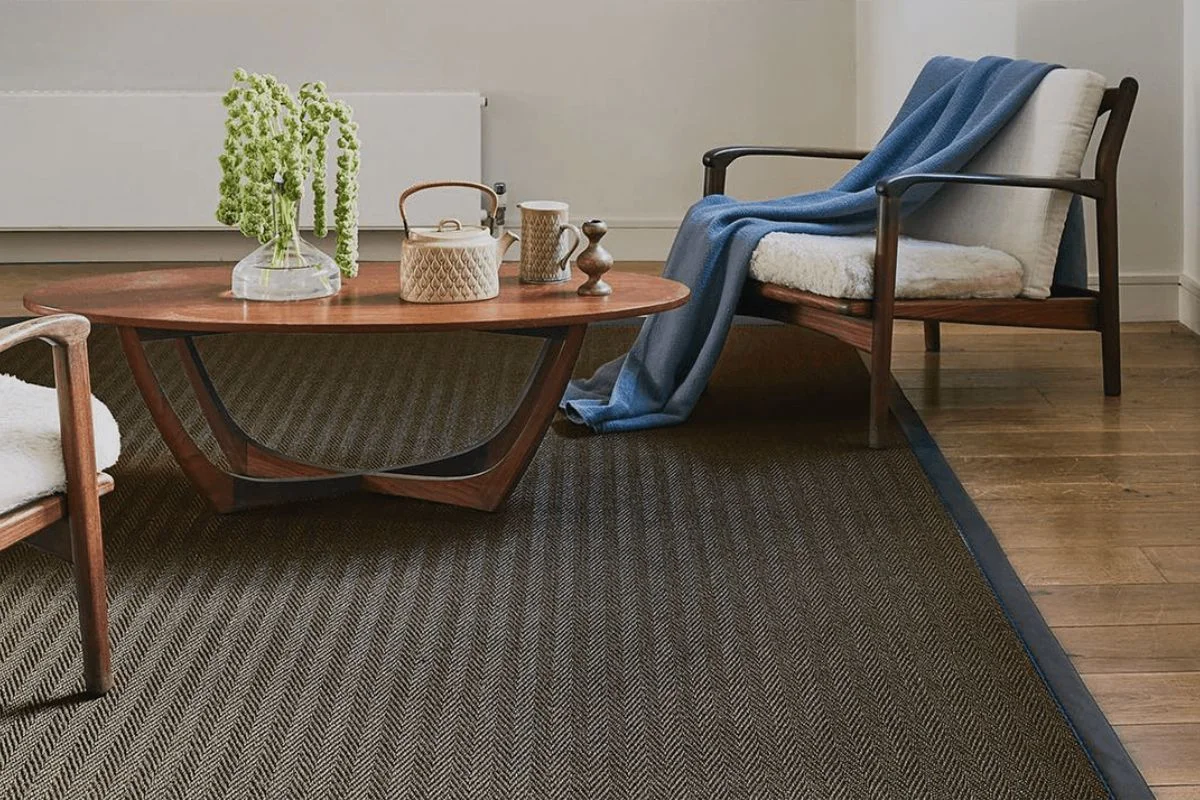
In the ever-evolving landscape of interior design, the integration of natural elements has become increasingly prevalent, reflecting a desire for harmony and sustainability within our living spaces. Sisal rugs, with their organic textures, earthy hues, and eco-friendly characteristics, have emerged as a defining element in modern interiors, seamlessly blending contemporary aesthetics with timeless allure.
As we navigate the complexities of modern living, there is a growing appreciation for materials that evoke a sense of connection to nature while embracing minimalist sophistication. Sisal rugs, crafted from the durable fibers of the agave plant, epitomize this ethos, offering a perfect balance of style, functionality, and environmental consciousness.
In this exploration of design trends, we delve into the myriad ways in which sisal rugs are transforming modern interiors, elevating them with their understated elegance and tactile appeal. From sleek urban apartments to sprawling suburban homes, sisal rugs have found their place as versatile design elements that effortlessly bridge the gap between aesthetics and functionality.
Brief overview of sisal rugs
A sisal rug is a type of natural fiber rug made from the strong and durable fibers of the sisal plant, which is native to Mexico and other parts of Central America. Sisal rugs are renowned for their eco-friendly qualities, as sisal plants are sustainable and renewable resources that require minimal water and pesticides to grow.
These rugs are handcrafted by weaving or braiding sisal fibers together to create a sturdy and resilient rug that is ideal for high-traffic areas in homes and offices. Sisal rugs come in various sizes, shapes, and patterns, making them versatile options for a wide range of interior design styles.
Sisal rugs are prized for their durability, resistance to stains and spills, and natural texture that adds warmth and character to any room. They are also hypoallergenic, making them suitable for allergy sufferers and those with sensitivities to synthetic materials.
In summary, sisal rugs offer a natural and sustainable flooring option that combines practicality with style. With their earthy aesthetic and eco-friendly properties, sisal rugs have become a popular choice for homeowners and designers seeking to create inviting and environmentally conscious living spaces.
Importance of sisal rugs in interior design
The importance of sisal rugs in interior design lies in their ability to enhance the aesthetic appeal of a space while offering practical benefits that contribute to a comfortable and inviting environment. Here are several reasons why sisal rugs are valued in interior design:
Natural Aesthetic: Sisal rugs bring a touch of nature indoors with their organic texture and earthy tones. Their natural appearance adds warmth and character to any room, creating a cozy and inviting atmosphere.
Versatility: Sisal rugs come in a variety of sizes, shapes, and patterns, making them versatile enough to complement a wide range of interior design styles. Whether used in traditional, contemporary, or eclectic spaces, sisal rugs can effortlessly tie the room’s decor together.
Texture and Depth: The textured surface of sisal rugs adds visual interest and depth to a room, creating a dynamic contrast with smooth surfaces like hardwood floors or tile. This tactile quality can elevate the overall design scheme and create a more engaging environment.
Durability and Longevity: Sisal rugs are known for their durability and resilience, making them well-suited for high-traffic areas such as living rooms, entryways, and dining rooms. Their sturdy construction ensures that they can withstand daily wear and tear, maintaining their beauty and functionality for years to come.
Allergy-Friendly: Unlike synthetic rugs that can harbor dust, allergens, and pet dander, sisal rugs are hypoallergenic and naturally resistant to mold and mildew. This makes them an ideal choice for individuals with allergies or sensitivities to synthetic materials.
Sound Absorption: Sisal rugs have sound-absorbing properties that help reduce echo and noise in a room, creating a quieter and more peaceful environment. This can be especially beneficial in open-concept spaces or rooms with hard surfaces that tend to amplify sound.
Environmentally Friendly: Sisal rugs are made from natural fibers that are biodegradable and renewable, making them an eco-friendly choice for environmentally conscious homeowners and designers. By opting for sisal rugs, individuals can reduce their environmental footprint and support sustainable practices in the home.

The Advantages and Disadvantages of Sisal Rugs
Advantages:
Natural and Sustainable: Sisal rugs are made from natural fibers derived from the agave plant, making them a sustainable and eco-friendly flooring option.
Durable and Long-lasting: Sisal rugs are known for their durability and resilience, able to withstand heavy foot traffic and everyday wear and tear.
Texture and Aesthetic Appeal: Sisal rugs add texture and visual interest to a room with their natural, earthy appearance, enhancing the overall ambiance and design aesthetic.
Hypoallergenic: Sisal rugs are naturally resistant to dust, mold, and mildew, making them an ideal choice for allergy sufferers and those with sensitivities to synthetic materials.
Sound Absorption: Sisal rugs have sound-absorbing properties that help reduce noise levels in a room, creating a quieter and more comfortable living environment.
Disadvantages:
Susceptible to Stains: Sisal rugs are prone to staining from spills and liquids, as the natural fibers absorb moisture quickly. Prompt cleaning is necessary to prevent permanent stains.
Abrasive Texture: The coarse texture of sisal fibers may be uncomfortable for some individuals to walk on barefoot, especially those with sensitive feet or skin.
Not Suitable for Moist Areas: Sisal rugs are not recommended for areas with high moisture levels, such as bathrooms or kitchens, as excessive moisture can cause the fibers to swell and deteriorate.
Limited Color and Pattern Options: Sisal rugs typically come in natural tones and patterns, which may limit design choices for those seeking more vibrant or intricate rug designs.
Requires Regular Maintenance: Sisal rugs require regular maintenance to keep them clean and well-maintained. Vacuuming and spot cleaning are necessary to remove dirt, debris, and stains from the fibers.
Choosing the Right Sisal Rug
Understanding Sisal Fiber Characteristics:
- Familiarize yourself with the unique characteristics of sisal fibers, including their natural texture, durability, and susceptibility to moisture.
- Consider whether the coarse texture of sisal fibers will be suitable for the intended space and occupants.
Considerations for Rug Size and Shape:
- Measure the dimensions of the area where the sisal rug will be placed to determine the appropriate size and shape.
- Consider leaving a border of flooring around the edges of the rug to create a visually appealing contrast.
Color and Pattern Options:
- Explore the range of natural tones and patterns available in sisal rugs, such as beige, tan, brown, and subtle geometric designs.
- Choose a color and pattern that complements the existing decor and color scheme of the room.
Budget Considerations and Quality Indicators:
- Determine your budget for the sisal rug and research different pricing options.
- Keep in mind that higher-quality sisal rugs may come with a higher price tag but offer greater durability and longevity.
- Look for indicators of quality such as tight weaving, even fiber distribution, and reinforced edges to ensure a well-made rug.
Texture and Comfort:
- Consider the texture of the sisal rug and how it will feel underfoot. Some sisal rugs may have a softer weave or incorporate other fibers for added comfort.
- Test the rug’s texture and comfort level by walking on it barefoot or with socks to ensure it meets your comfort preferences.
Environmental Considerations:
- Choose sisal rugs made from sustainably sourced fibers and manufactured using environmentally friendly practices.
- Look for certifications or labels indicating that the rug meets environmental standards and criteria for responsible sourcing and production.
Sample and Test:
- Request samples or swatches of sisal rugs to see how they look and feel in the intended space.
- Place the samples in different areas of the room to assess how they interact with lighting, furniture, and other elements of the decor.

Maintaining and Caring for Sisal Rugs
Regular Cleaning Routines:
- Vacuum the sisal rug regularly to remove dirt, dust, and debris that can accumulate in the fibers.
- Use a vacuum cleaner with a brush attachment or a handheld vacuum to gently agitate the fibers and remove surface dirt.
Handling Spills and Stains:
- Blot spills immediately with a clean, dry cloth or paper towel to absorb as much liquid as possible.
- Avoid rubbing or scrubbing the spill, as this can push the liquid deeper into the fibers and cause the stain to spread.
- For stubborn stains, use a mild detergent diluted with water and gently dab the affected area, then blot with a clean cloth to remove the solution.
Preventing Fiber Damage and Fraying:
- Avoid placing heavy furniture directly on the sisal rug, as this can cause indentations and damage to the fibers.
- Use furniture pads or coasters under the legs of furniture to distribute weight evenly and prevent indentation marks.
- Trim any loose or frayed fibers with scissors to prevent them from unraveling and causing further damage to the rug.
Professional Cleaning and Restoration:
- Consider hiring a professional rug cleaner to deep clean and restore your sisal rug periodically.
- Professional cleaning methods may include dry cleaning, steam cleaning, or specialized rug cleaning techniques to remove embedded dirt and stains.
- Follow the manufacturer’s recommendations for professional cleaning intervals based on the level of foot traffic and use of the rug.
Rotating and Flipping:
- Rotate the sisal rug periodically to ensure even wear and prevent excessive fading or discoloration in high-traffic areas.
- Flip the rug occasionally to expose both sides to sunlight and airflow, which can help prevent moisture buildup and maintain the rug’s freshness.
Protecting from Sunlight:
- Avoid placing sisal rugs in direct sunlight or areas with prolonged exposure to UV rays, as this can cause fading and discoloration over time.
- Use window treatments such as blinds or curtains to filter sunlight and protect the rug from UV damage.
Using Rug Pads:
- Place a rug pad underneath the sisal rug to provide additional cushioning, prevent slipping, and protect the rug and underlying flooring from damage.
- Choose a rug pad made from natural materials such as felt or rubber to ensure compatibility with the sisal rug fibers.
Conclusion
In conclusion, sisal rugs offer a harmonious blend of natural beauty, durability, and functionality that make them a valuable addition to any home or commercial space. From their eco-friendly origins to their ability to enhance the aesthetic appeal of a room, sisal rugs have established themselves as versatile and timeless flooring options that resonate with homeowners and designers alike.
